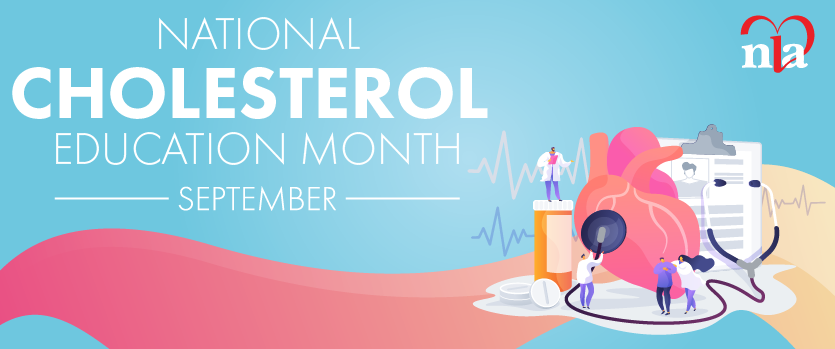Please give us a little introduction about yourself.
I am currently working as a Dean of the School of Pharmacy and Health Profession at Creighton University. This is my 13th year in this position. Because I am more involved in administrative side of the academics and not too involved in the clinical side, I really miss clinical involvement. I enjoy what I do and am in a position to support and help other individuals succeed. We have implemented some interesting programs at Creighton addressing cardiovascular risk reduction including a wellness program for the university employees. Creighton faculty run the program, and we support and help the faculty involved in this program. We work very closely with the employee’s primary care physician as well. The program can be easily expanded external to Creighton, and we actually are talking with other organizations in Omaha so that it could be started for their employees too.
How long have you been member of the NLA?
I joined the organization in 2002-03 so it has been a while since I joined NLA. I was part of another organization, which was called National Pharmacy Cardiovascular Council (NPCC). That council was made up of 20 pharmacists from all over United States, had been functioning for a number of years, and was based on the similar model to Southeast Lipid Association(SELA) which gave birth to NLA. NPCC had a strong educational effort going for a long time with regards to creating more awareness with regards to cholesterol related diseases, pharmacy education as well as working with different professional organizations. I became involved in NPCC after hearing a lecture by Scott Grundy in 1986-87 regarding the potential of statins around the time of ATP1. Jim McKenney from Virginia Commonwealth University was part of NPCC and was also working with SELA. I have known Jim for a long time, so he was the driving force for our whole group to merge into NLA. Jim was working with some other physicians particularly W. Virgil Brown to develop the NLA.
How has NLA changed over the past 15 years?
NLA has grown quite a bit. It provides multidisciplinary interprofessional environment, which is a big attraction. It has physicians and non-physician members which is a big plus. It also offers certification exams, which has really helped in the growth of the NLA. The NLA has something for everyone, including pharmacists, nurse practitioners, cardiologists, primary care doctors, endocrinologists, and hospitalists.
What has been your favorite/most memorable moment as an NLA member?
Achieving Fellow of the NLA.
Why have you remained member for all these years?
I am a life member of NLA. The collaborations within the organization, the ability to network with individuals across disciplines, the continuing education, scientific meetings, and a chance to meet experts; it makes a lot of sense to me, professionally, to be participating in NLA.
What do you see as the benefits of the NLA membership?
It has a lot to offer as I stated; CME, periodic meetings, opportunity to make connections with others around the country and even around the world. It has an outstanding potential for members to take advantage of.
Over the past 15 years, what moments stand out as turning points for the organization?
The NLA has seen a big spurt of growth, reaching more than 3,000 members at one point. Our presence became well known nationally as ATPII and ATPIII came about because there was so much more to clinically use, we had much more data to be used and bring to the public. I would say growth of NLA paralleled with the availability of the data.
What is in store for NLA in the years to come?
The NLA does a lot in supporting its members in a various ways, supporting the national call for cardiovascular risk reduction and recommendations for care. I think this would continue. I think there is a lot of potential for NLA to make international connections, I see that coming.
How has being a member of NLA helped you grow personally and professionally?
The guidelines, recommendations, and continuing education help me stay up to date on the pathophysiology of lipids and their management. Practitioners really do appreciate that the NLA does a great job in helping us grow professionally. It also helps in keeping in touch with the new issues through the meetings and scientific sessions.
How have you used your NLA membership in everyday practice?
It has helped significantly. One time about 10-12 years ago and I attended the NLA Scientific Sessions and heard two speakers having a pro con debate about the lipid risk reduction. I took it back to my clinic and put it to use. We used the research, publications and recommendations from NLA all the time in our clinical practice. The information pertaining to the dyslipidemia is very applicable. We developed protocols in our clinics for patients who have a dyslipidemia.
What advice would you give to a new member of the organization?
First, I would like to congratulate the new members. I am glad the new members are involved. There are all kinds of things where folks can get involved in various regional chapters, committees and national association. It is a very welcoming organization. As you get involved and move into the organization, you can potentially become involved at the national level in the board and other committees of the organization.
If you could meet anyone in the past or present and pick their brain, who would it be?
Franklin Delano Roosevelt (FDR). I would love to meet him and pick his brain as to how he managed and thought about the issues of his time. From a lipid perspective, I would love to meet Michael Brown, who developed the LDL receptor theory.






.jpg)
.png)












